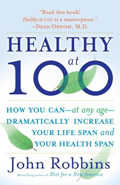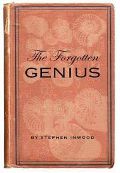Hayflick and Moorhead Characterize Cellular Senescence in Primary Human Cells
 Who:Leonard Hayflick, P. S. Moorhead
Who:Leonard Hayflick, P. S. MoorheadWhen:May 15, 1961
Methods: The authors characterized 25 strains of human cells over the course of long-term growth in culture.
Institution: Wistar Institute
Where: Philadelphia, PA, U.S.A
Hayflick and Moorhead were initially motivated by a desire to develop non-tumorigenic human cell systems that could be cultured over long periods of time, primarily in order to grow viruses to make vaccines. The field had been frustrated by some time by the difficulty of growing primary human cells for extended periods.
The authors take care to distinguish between "cell strains" (what we now think of as "primary cells": karyotypically normal cells, derived from healthy tissue, that can be subcultured in vitro for a limited time) and "cell lines" ("transformed cells": karyotypically abnormal cells, usually derived from tumor samples, that can be subcultured indefinitely). The finite lifespan of cell strains is one of 11 characteristics distinguishing them from cell lines.
The paper describes the degenerative changes, especially regarding viability and nuclear morphology, that occur as cell strains approach their in vitro lifespan.
In the Discussion, Hayflick and Moorhead use the term "senescence" to describe the catastrophic loss of viability that takes place at the end of a cell strain's in vitro lifespan. (In modern usage, "senescence" refers to the termination of cell division at replicative exhaustion; we now know that not all primary cell lines undergo a precipitous decline in viability at this time.) They further suggest that senescence may have some relationship to organismal ageing, though they do not elaborate on this idea.
Having excluded extrinsic factors (such as media composition) as a cause of senescence, the authors conclude that intrinsic factors must be responsible. Based on mathematical considerations, they propose a mechanism involving "a factor, necessary for cell survival, whose rate of duplication is less than that of the cell (asynchronous). It is possible to conceive of two separate self-duplicating systems one of which (the hypothetical") is contained within the other (the cell). A slight reduction in replication rate of the hypothetical system could possibly lead to a gradual depletion of this factor to a critical or threshold level within 40-50 generations. Conversely the rate of synthesis itself may be unchanged, but a slightly higher rate of loss ... would eventually yield the same result."
This model broadly anticipates the role of telomere shortening in replicative senescence.
References
- Hayflick, L., Moorhead, P.S. The Serial Cultivation of Human Diploid Cell Strains. Experimental Cell Research, 1961, Dec;25:585-621




